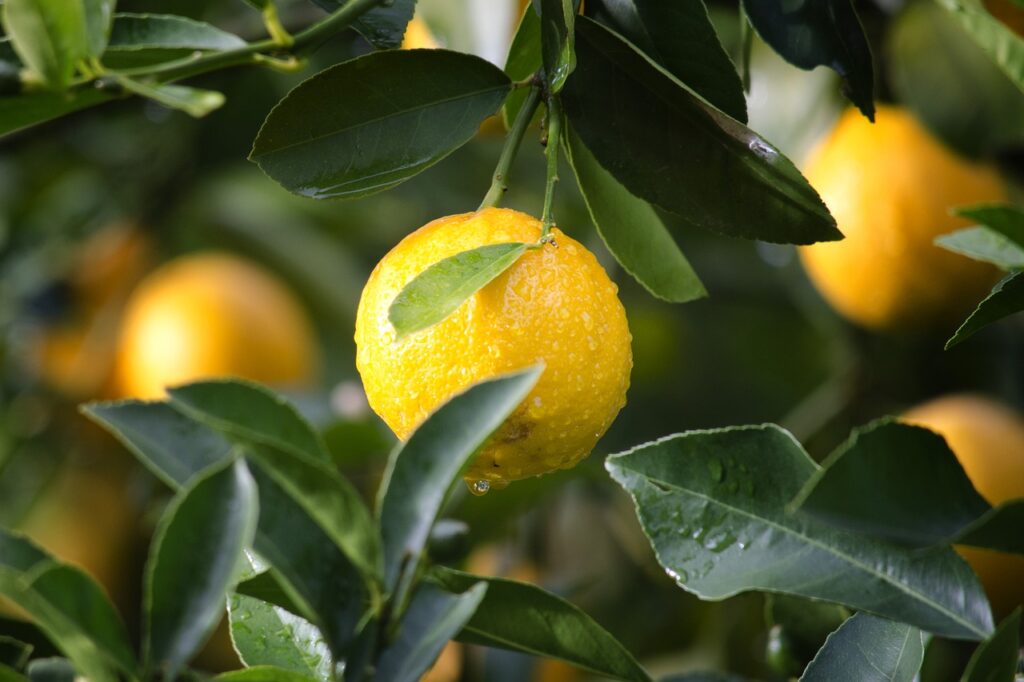Growing a lemon tree from seed is surprisingly straightforward, and something that anyone can do if they have a warm, sunny windowsill. It will take a few years to before it fruits and flowers but eventually your hard work will pay off. Citrus will grow in all parts of Australia except areas that experience severe frost.
About Lemons

Lemons (Citrus limon) are among the world’s most popular citrus fruits.
They grow on lemon trees and are a hybrid of the original citron and lime.
There are many ways to enjoy lemons, but they taste very sour and are usually not eaten alone or as a whole fruit.
Instead, they’re often a garnish with meals, and their juice is often used to provide a sour flavor. They are a key ingredient in lemonade.
A great source of vitamin C and fiber, lemons contain many plant compounds, minerals, and essential oils.
These yellow fruits also have many potential health benefits. Eating lemons may lower your risk of heart disease, cancer, and kidney stones.
Lemons contain very little fat and protein. They consist mainly of carbs (10%) and water (88–89%).
A medium lemon provides only about 20 calories.
The nutrients in 1/2 cup (100 grams) of raw, peeled lemon are (1Trusted Source):
- Calories: 29
- Water: 89%
- Protein: 1.1 grams
- Carbs: 9.3 grams
- Sugar: 2.5 grams
- Fiber: 2.8 grams
- Fat: 0.3 grams
Here’s how you grow your own lemon tree
Firstly you’ll need
- An organic lemon since non-organic lemons often contain non-germinating seeds
- Fertile potting soil, and natural fertilisers like compost
- A seedling pot that is about 24 inches wide by 12 inches deep
- A planting pot that is six inches wide and six inches deep (this comes in handy further down the track)
- A sunny, indoor growing location
Directions
- Moisten the potting soil so that it is damp, but not soaked, all the way through.
- Fill the smaller pot with soil, all the way up to an inch below the rim.
- Cut open your lemon and remove a seed. Remove all of the pulp from its surface. A good way to do this is to simply suck on it until it is clean.
- Do not delay to plant. The seed must still be moist when it is buried into the soil in the smaller pot. Plant the seed about half an inch deep in the middle of the pot.
- Spray the soil that is directly above the seed gently with water from a spray bottle.
- Cover the pot with clear plastic wrap, seal the edges with a good rubber band, and poke small holes in the top with a pencil.
- Place the pot in a warm, sunny location.
- Spray on more water occasionally, not allowing the soil to dry out. Do not cause water to puddle though. Just keep the soil somewhat moist.
- After about two weeks, when the sproutling emerges, take the plastic covering off. If you need additional light for your lemon plant, you can use a grow light to supplement the sun’s light.
- Take care of the young plant by keeping the soil damp, by making sure it gets at least eight full hours of light per day, and by giving it moderate doses of organic fertiliser like compost.
- Watch over your plant to ensure it is not attacked by bugs or diseases. Prune off brown, dead leaves when necessary.
- When the plant outgrows its small pot, put it in the larger pot. You will go through much the same procedure when you re-plant it as when you first planted. Younger plants need more water than older plants, but they all do need adequate water. Don’t starve your poor plant after all that work of growing it!
Growing Tips
Light
All citrus trees love the sun, and the Meyer lemon tree is no different. It will grow and fruit best in full sun, though it can survive in a slightly shady spot. This tree prefers at least eight hours a day of direct sunlight. Opt for your sunniest window when growing your plant indoors, or use grow lights to supplement the natural sunlight.
Soil
Meyer lemon trees can grow in almost any type of soil with good drainage. They prefer a soil pH between 5.5 and 6.5 and thrive in loamy or sandy soils. Add lime to increase the soil pH or sulfur to lower it if necessary.
Water
Proper watering is one of the keys to growing any citrus plant, particularly those grown in pots. The aim is to keep the soil moist but not soggy. Stick your finger into the soil at least up to the second knuckle. If you feel dampness at your fingertip, wait to water. If it feels dry, water your plant until you see water run out the bottom of the pot.
Harvesting
Lemon trees grown indoors usually just fruit in the spring, while outdoor trees in warm climates will typically fruit year-round. Because citrus fruit will only continue to ripen while still on the tree, make sure to wait until it’s ripe before picking.
When ripe, lemons will be an egg yolk yellow color and slightly soft to the touch. Use a knife or scissors to cut the fruit off so you don’t risk damaging the plant by pulling off a larger piece than intended.














